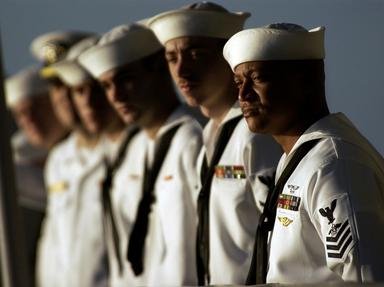Answer: Thresher and Scorpion
Thesher (SSN-593) had bad luck from the start. She was commissioned on August 3, 1961. On November 2, 1961 she suffered a failure of her diesel generator while in port and had to be evacuated. In 1962, she was struck by a tug boat while mooring at Cape Canaveral, Florida and suffered damage to her ballast tanks. On April 10, 1963 Thresher was conducting deep diving tests off the coast of Massachusetts. Operating at near her test depth of 1300 feet, she reported she was having "minor problems." She was never heard from again. She was found in 5500 feet of water, broken into six pieces. The most probable cause of her loss was determined to be a leak in a high-pressure water line, which shorted out her electrical system. 129 men, inluding seventeen civilian observers, lost their lives.
Scorpion (SSN-589) was commissioned on July 29, 1960. On May 16, 1968 she left Rota, Spain on her way back to her homeport of Norfolk, Virginia. When she did not return as scheduled on May 27, a search was launched, but it was not until October that her wreckage was located in 3000 feet of water 400 miles southwest of the Azores. No one knows what caused Scorpion to sink; there are many theories, including one that she was sunk by a Russian submarine. It is known that Scorpion was suffering from a number of engineering problems, and had undergone emergency repairs shortly before her last mission. Her crew of 99 officers and men perished with her.
 There are 344 questions on this topic. Last updated May 04 2024.
There are 344 questions on this topic. Last updated May 04 2024.
 Quick Question
Quick Question